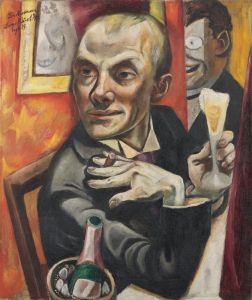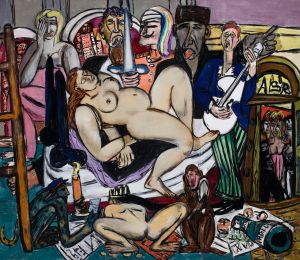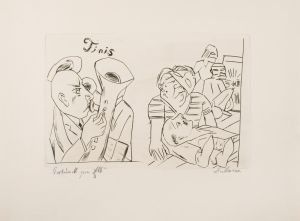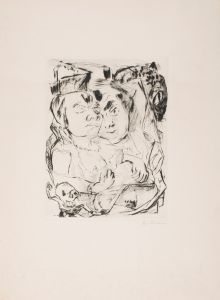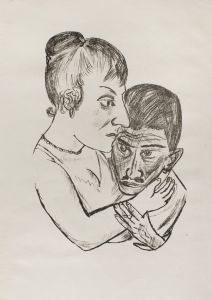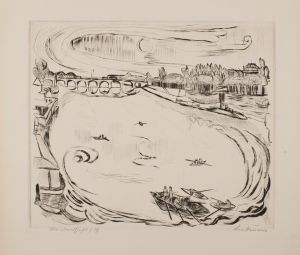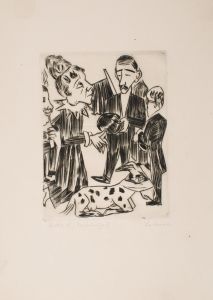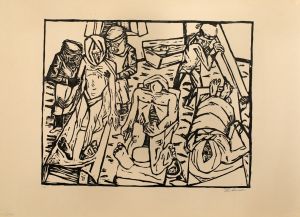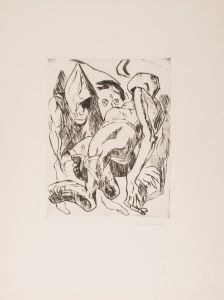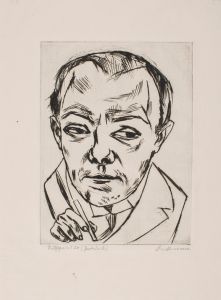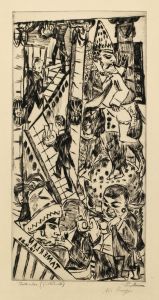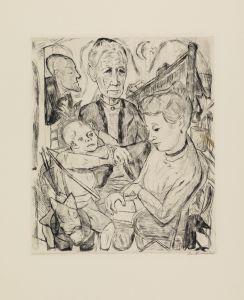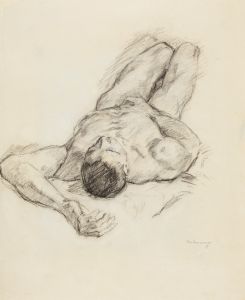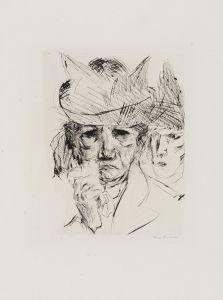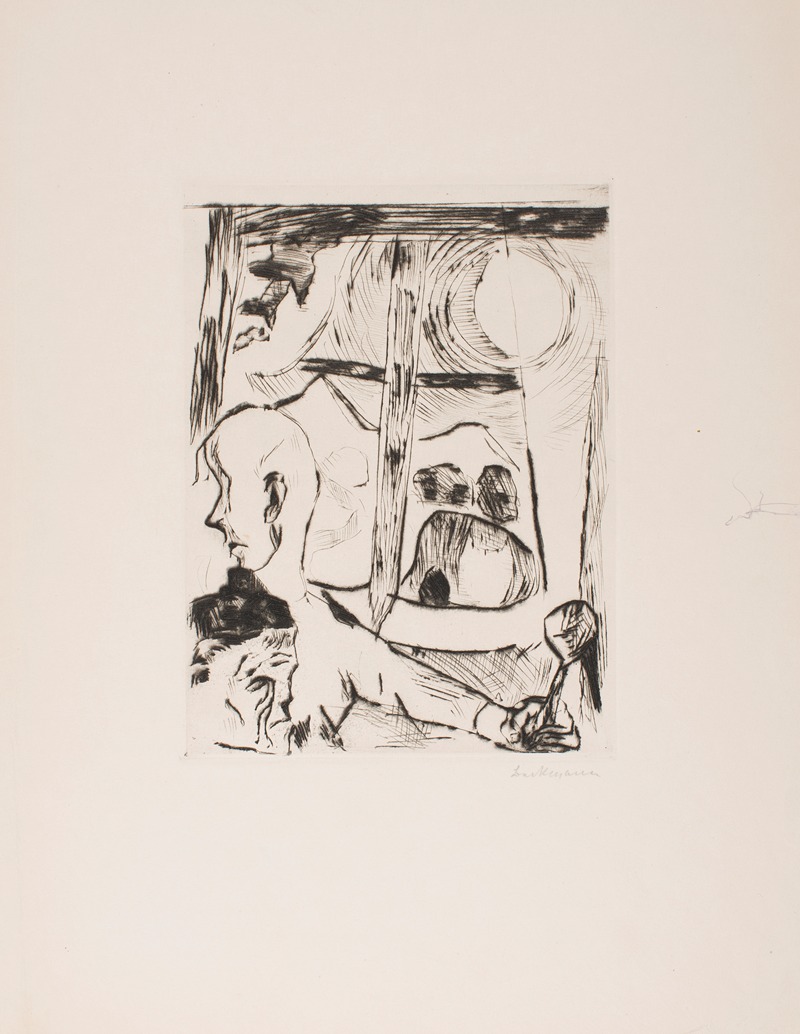
Illustration for Chapter 3, from the portfolio ‘The Duchess’
A hand-painted replica of Max Beckmann’s masterpiece Illustration for Chapter 3, from the portfolio ‘The Duchess’, meticulously crafted by professional artists to capture the true essence of the original. Each piece is created with museum-quality canvas and rare mineral pigments, carefully painted by experienced artists with delicate brushstrokes and rich, layered colors to perfectly recreate the texture of the original artwork. Unlike machine-printed reproductions, this hand-painted version brings the painting to life, infused with the artist’s emotions and skill in every stroke. Whether for personal collection or home decoration, it instantly elevates the artistic atmosphere of any space.
Max Beckmann, a prominent German painter, printmaker, and draftsman, created the artwork Illustration for Chapter 3 as part of his portfolio titled The Duchess. This portfolio, completed in 1918, consists of ten lithographs and is considered one of Beckmann's significant contributions to the medium of printmaking. The series reflects Beckmann's engagement with themes of human emotion, existential struggle, and the complexities of modern life, which were central to his work during this period.
The Duchess portfolio was inspired by the novel The Duchess of Malfi by John Webster, a 17th-century English playwright. The play is a dark tragedy that explores themes of power, corruption, and human suffering. Beckmann's illustrations, however, do not directly depict scenes from the play but instead interpret its mood and themes through his unique artistic lens. The portfolio captures the psychological intensity and dramatic tension characteristic of both the play and Beckmann's broader body of work.
Illustration for Chapter 3 is one of the ten lithographs in the series and exemplifies Beckmann's expressionist style. The artwork features bold, dynamic lines and a sense of emotional depth, hallmarks of Beckmann's printmaking. The composition reflects his interest in exploring the human condition, often portraying figures in ambiguous or unsettling situations. While the specific narrative of this illustration is not explicitly tied to a particular moment in the play, it resonates with the overarching themes of despair and resilience.
Beckmann created The Duchess portfolio during a tumultuous period in his life and career. The year 1918 marked the end of World War I, a conflict that profoundly affected Beckmann and his artistic outlook. Having served as a medical orderly during the war, Beckmann experienced firsthand the horrors of human suffering, which deeply influenced his work. This period saw a shift in his style from a more traditional approach to a raw, expressionist aesthetic that sought to convey the emotional and psychological realities of the modern world.
The portfolio was published in a limited edition, making it a rare and valuable example of Beckmann's printmaking. Today, Illustration for Chapter 3 and the other lithographs from The Duchess are held in various museum collections and are studied as important works within the context of early 20th-century German art. Beckmann's ability to merge literary inspiration with his distinct artistic vision has solidified his reputation as one of the leading figures of German Expressionism.





